

john rogers (1823-
Early years
John Rogers was born in about 1823 in the West Midlands. The one census return on which he appears gives his place of birth as ‘Worcester’ (or Worcestershire), but this is misleading; the county boundaries of the West Midlands changed a number of times during the nineteenth century as administrative areas were reformed, and it is likely that he originated from the area where Warwickshire, Worcestershire and Staffordshire met before the metropolitan area of Birmingham was created. He was named after his father who was a stone mason. His mother’s name is not known.
Although his father had a skilled trade, John did not follow suit. He worked as a
labourer for most of his life and was working as a general labour in 1852 when he
married Ann Brown (née Harvey). She was a local girl from Oldbury and, in 1852, was
a young widow with a two-

Bride and groom gave their address as Waters Lane, Tipton, and both made their mark
with a cross, as did their witnesses, Elizabeth and Mark Homer, who were Ann’s sister
and brother-
Tipton has been called the Venice of the Midlands due to the number of canals that
run through it. But unlike its Italian counterpart, there was nothing beautiful or
elegant about Tipton in the nineteenth century. The discovery of ironstone and coal
in the previous century had led to rapid expansion and, by the mid-
After their marriage, John and Ann moved a few miles east to Greets Green, just outside West Bromwich. It was here that their son, Thomas, was born on 16 August, two months after their wedding.
Brickmaking
Greets Green was the location of one of the largest brickworks in the area, the Piercy
Works, and it was probably here that John was working here as a brickyard labourer;
it was a occupation that he was to pursue for the rest of his life. Brickmaking was
gruelling work. People worked 12-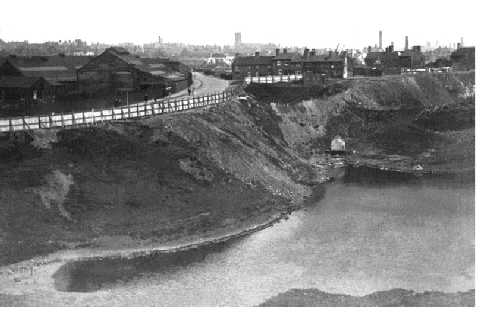 ay working in wet clothes. By far the
most arduous part of brickmaking was excavating the clay. This work was generally
carried out in winter and the clay dug from pits which were excavated until their
clay seams were exhausted. The resultant hole, known as a marl hole, once derelict,
often filled with water, and they became a prominent, and sometimes dangerous, feature
of the landscape. The photograph on the left shows the last marl hole at Rounds Green
in the 1920s. Once the clay was excavated it was thrown into a mould, then left to
dry before being fired in a kiln. As well as adults, brickfields employed children
as young as eight years old who carried out a variety of task including carrying
clay to the adult brick makers, carrying wet bricks to the drying sheds and stacking
them to dry, putting dried bricks into the kiln, and emptying the kilns when the
bricks had been baked. In 1841, an eye witness from a South Staffordshire brickworks
noted:
ay working in wet clothes. By far the
most arduous part of brickmaking was excavating the clay. This work was generally
carried out in winter and the clay dug from pits which were excavated until their
clay seams were exhausted. The resultant hole, known as a marl hole, once derelict,
often filled with water, and they became a prominent, and sometimes dangerous, feature
of the landscape. The photograph on the left shows the last marl hole at Rounds Green
in the 1920s. Once the clay was excavated it was thrown into a mould, then left to
dry before being fired in a kiln. As well as adults, brickfields employed children
as young as eight years old who carried out a variety of task including carrying
clay to the adult brick makers, carrying wet bricks to the drying sheds and stacking
them to dry, putting dried bricks into the kiln, and emptying the kilns when the
bricks had been baked. In 1841, an eye witness from a South Staffordshire brickworks
noted:
“The works was made up of 8 brickyards and employed between 85 and 100 men with an
unspecified number of young children. The key figure was the ovenman himself, who
had under him, and paid, gangs of boys and girls. He also paid the moulder, who in
turn employed one man (the temperer) and one or two boys to hand him the clay and
to carry the unfired bricks to the flats to dry. Some boys were required to stay
up all night at the ovens to stoke the fires, their only shelter being a small shed
containing bedding straw. Oven work and clay work were done outdoors, only moulding
carried on under cover. In claiming that the work was healthy, the ovenman asserted
that he preferred it 'a good deal to being pent up in the pot-
On the move
A few years 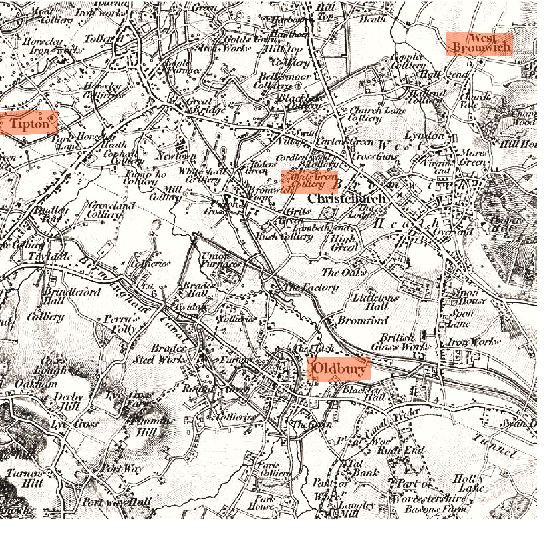 after his marriage, in about 1855, John and Ann’s second child, John,
was born, followed in 1857 by Edmund. The fortunes of brickwork sites were often
dictated by local demand for bricks, and the seams of clay available, and by 1859,
John was travelling further afield in search of work, aided by the network of canals
that criss-
after his marriage, in about 1855, John and Ann’s second child, John,
was born, followed in 1857 by Edmund. The fortunes of brickwork sites were often
dictated by local demand for bricks, and the seams of clay available, and by 1859,
John was travelling further afield in search of work, aided by the network of canals
that criss-
Ann and the family travelled with him, and over the next twelve years, children were born at various locations throughout England. Catherine was born in about 1859 in Kirby Lonsdale, not far from Kendal in the Lake District. From here, John and his family returned south and in early 1861 were living in Olbury, next door to Ann’s parents. Next, they moved to Burton on Trent, situated between Birmingham and Derby, where two sons, Richard and William, were born in about 1862 and 1864.
As one job was coming to an end or the family were ready to move on, John would find
new work. Given the diverse locations the family lived in, it is unlikely that they
travelled to new towns on mere speculation; it is more likely that John found out
about work from people the family met on their travels or perhaps by talking to the
bargeman who travelled up an down the country on the network of canals that ran through
the Midlands into the heart of London. 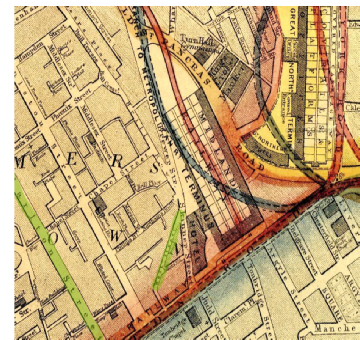 Although John could not write, he may have
been able to read (writing was only considered necessary for people who needed such
skills for their work), so may have seen job advertisements. Perhaps this is how
John heard about the building of St Pancras station in London. The building of the
new railway station, which was intended as a terminus for the Midland Railway Company’s
East Midlands line, begun in 1864. From the start, it was an ambitious design, and
on its completion in October 1868 it became the largest single-
Although John could not write, he may have
been able to read (writing was only considered necessary for people who needed such
skills for their work), so may have seen job advertisements. Perhaps this is how
John heard about the building of St Pancras station in London. The building of the
new railway station, which was intended as a terminus for the Midland Railway Company’s
East Midlands line, begun in 1864. From the start, it was an ambitious design, and
on its completion in October 1868 it became the largest single-
In March 1868, John and his family were in living at 38 West Street which was, literally, on the doorstep of the new St Pancras Station. It was here that a daughter, Adelaide, was born on 2 March 1868. She was baptised two days later in the Christ Church in Somers Town which had been opened in Charlton Street only that year to replace the Church of St Luke which had been demolished to make way for St Pancras Station. This map of 1868 shows Charlton and West Streets marked in green next to the site of the new St Pancras station (‘Midland Terminus’). John’s occupation was entered into the baptism register as ‘railway labourer’. Taking these facts together, there can be little doubt that John was working for the Midland Railway Company on the building of St Pancras Station. The photographs below show labourers and brick makers working on the station’s construction.
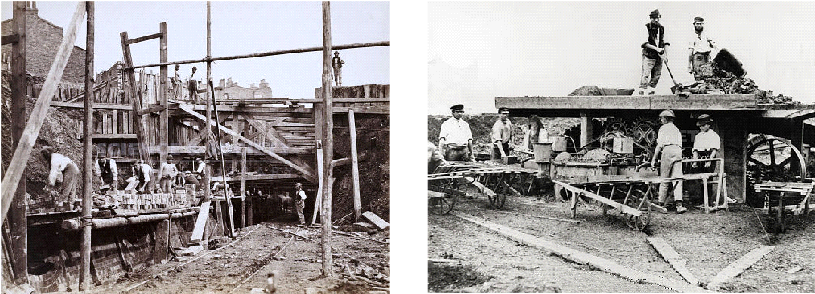
Going north
Although work continued on the facade of the station for another few years, the family
returned to Oldbury sometime between 1868 and 1871. From here, John and his sons,
John and Edmund, travelled to Ireleth-
There had been a settlement at Ireleth (also referred to as ’Above Town’) since medieval
times, but Askam had sprung up only recently after the second largest deposit of
iron ore in the country was discovered there in 1850. To smelt the iron ore, which
was extracted locally and also brought in by rail from all over the peninsula, four
blast furnaces were built from the 1860s onwards. The Furness Brick Works was established
in 1845 and supplied the bricks for the furnaces (it is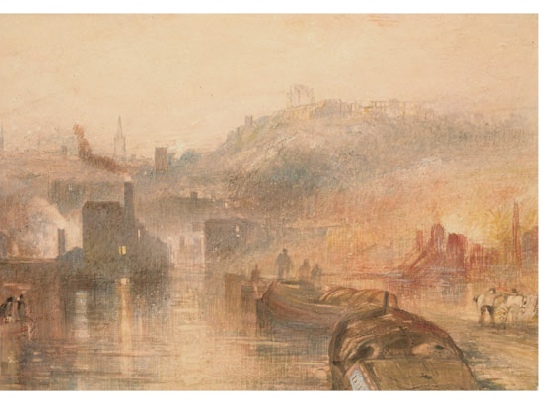 still trading today and
is shown in the photograph below). The Rogers’ family worked for the company and
John, with at least 20 years’ brickfield experience, probably acted as a foreman.
still trading today and
is shown in the photograph below). The Rogers’ family worked for the company and
John, with at least 20 years’ brickfield experience, probably acted as a foreman.
By early June 1871, Ann had arrived in Furness with the children, although Thomas, by now 19, may have remained in Oldbury or sought work elsewhere. How John and Ann, both illiterate, managed to communicate over such distances is unknown. Perhaps John and Ann had arranged that she would travel to Askam, or perhaps someone wrote a letter for John to send to Ann for a friend or clergyman to read.
Between the summer of 1871 and early 1872, the family moved to Barrow-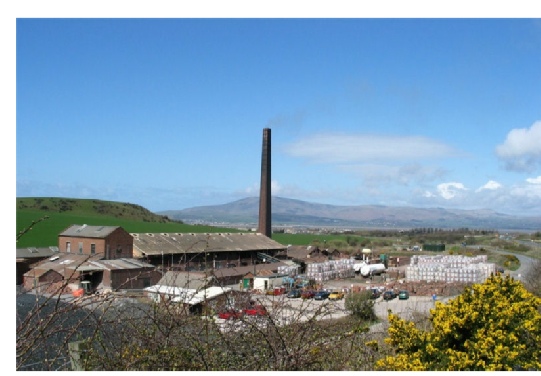 that she was expecting her ninth child, so this may have
influenced their decision.
that she was expecting her ninth child, so this may have
influenced their decision.
By 1872, Barrow was a busy industrial town and home to the largest steelworks on earth. Its natural harbour allowed the locally produced steel to be put to another use: shipbuilding, and by 1881 it had three docks and a population of 47,000 (the illustration shows the iron shipbuilding yard in 1874). The third of these docks, Ramsden Dock, was completed in 1872 and John was probably employed in its building. Certainly when Ann gave birth to her last child, a daughter who was named Sarah Ann, on 15 March 1872, the family were living at Ramsden Dock Cottages in the heart of Barrow’s docks. Once building was complete, the family no doubt moved on in search of work, possibly heading back to the Midlands, or further south. It is not known where John died, only that his death occurred sometime between March 1872 and April 1881.
who’s related to whom
john rogers
(1823-
ann brown (née harvey)
m
florence ada collins
(1906-
lilian jeanne monger
(1928-
living moss
(born 1968)
john rogers
(1834-
living fenley
(born 1946)
| paternal tree |
| maternal tree |
| index of names |
| monger photos |
| moss photos |
| collins photos |
| bostock photos |
| george moss |
| william moss |
| george c moss |
| eleanor evans |
| gregory family |
| thomas gregory |
| thomas gregory |
| sissey family |
| christopher sissey |
| sissey children |
| brisco family |
| william briscoe |
| john biscoe |
| susan webb |
| briscoe children |
| betsy biscoe |
| james bostock |
| george bostock |
| james g bostock |
| edwin f bostock |
| may bostock |
| marie wicks & sarah homan |
| homan bostock family |
| steward family |
| charles steward |
| ducro family |
| esther steward |
| mary & ann steward |
| stephen ducro |
| mary ducro |
| Ann_Briggs |
| hockerday family |
| thomas hockaday |
| mary ann hockerday |
| peters family |
| william peters |
| joseph peters |
| emily a peters |
| joseph collins |
| samuel collins |
| joseph collins |
| henry j collins |
| florence a collins |
| william shepherd |
| ann e shepherd |
| rogers family |
| john rogers |
| sarah a rogers |
| harvey family |
| thomas harvey |
| ann harvey |
| grigg family |
| william monger |
| charles monger |
| george monger |
| albert j monger |
| benham family |
| thomas benham |
| mary a benham |
| stephen dunford |
| fanny dunford |
| cawte family |
| robert cawte |
| william cawte |
| john r cawte |
| reynolds family |
| william reynolds |
| emma reynolds |